它的开端始于最近反复读到一个片段——博尔赫斯在《探讨集》中虚构的中国百科全书。在《约翰威尔金斯的分析语言》中,博尔赫斯借用这个百科全书中的分类用以说明分类的随意和差异,以及我们对世界万物认识的局限。
类和关系的基本思维结构在我们年幼时就已建立。我们通过联想、类比、概念组织将我们的经验世界进行分类。如“土气水火”;如“阴阳”;如“飞禽走兽”;如“喜怒哀乐”。
社会性符号系统建立之后,我们可以从符号系统衍生分类。一种结构自我可以生发和扩展。最为通识的是林奈的生物分类法——它是对于社会结构的复制。将kingdom作为界——植物界和动物界。而当真菌被发现后,以“王国之上为域”——借由政治上的概念创立域为更大的分类单位。社会结构通过层级概念将自身的权威、稳定赋予了自然。
同时,在能和数字产生对应关系的领域,我们也习惯基于数字逻辑的分类。如“单声道双声道”,“百万、千万、亿万富翁”。甚至视频中的倍速也如此。与之相近的是基于字母顺序的(A——Z)分类。
It began with a recent repetition of a fragment of Borges’s fictional Chinese encyclopedia in the Collected Discussions. In John Wilkins’s Analytical Language, Borges borrows from this encyclopedia of classifications to illustrate the arbitrariness and differences of classifications, as well as the limitations of our understanding of the world.
The basic thinking structure of classes and relationships is established at a young age. We categorize the world of our experience through associations, analogies, conceptual organizations. Such as “earth, gas, water and fire”; Such as “yin and yang”; Such as “birds and beasts”; Such as “joy, anger, sorrow, and joy”.
After the social symbol system is established, we can derive the classification from the symbol system. A structural self can grow and expand. The most well-known is Linnaeus’s taxonomy – a reproduction of social structures. Kingdom as the kingdom – the plant kingdom and the animal kingdom. When the fungus was discovered, it was established as a larger taxonomic unit by creating a domain “above the kingdom”—a political concept. The social structure gives its own authority and stability to nature through the concept of hierarchy.
At the same time, in the field that can correspond to numbers, we are also accustomed to classification based on numerical logic. Such as “mono and binaural”, “millions, millions, billionaires”. Even the double speed in the video. A similar approach is the alphabetical (A-Z) classification.

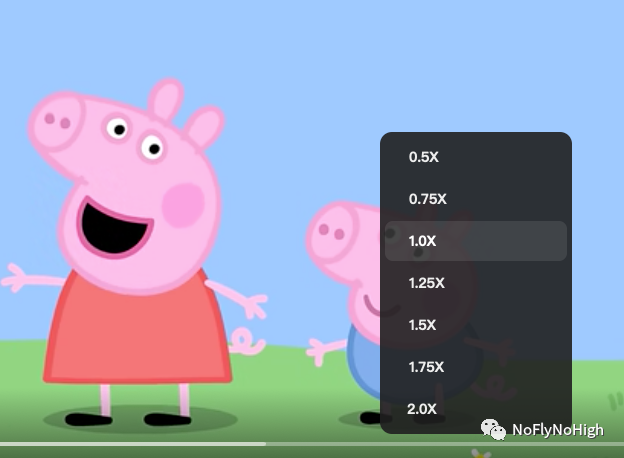
此类分类系统占据逻辑优势,代表着强烈的、不可置疑的客观性。
对于其他领域内的语义的借用是日常当中最为常见的——硬摇滚&软摇滚;写实&写意;现代&后现代;古典&新古典;喜剧&悲剧。它的创造和使用简单、日常而高效。它是系统间的相互解释。
在声音领域也是如此。我们有基于物理学领域的声音分类——高频、中频、低频。我们也有从其他感知领域的联想分类——舒缓的、温柔的、躁动的、压抑的。
一种分类以及分类的命名虽然为我们提供给了一种感知和实践的经验方式。但任何一种分类的建立都是伴随着对于整体感觉的舍弃。特别是当符号系统成为先行的一种方式时——即分类先于经验和实践时。
当我们从一个小孩口中听到类似于“我要一分钟那么多的纸”这样对物体的特指和命名时。我们就能看到我们自己在前运算阶段的思维和博尔赫斯的对应——超越规整逻辑的、基于实践的分类,
从声音的探索(好玩)角度我们也可以找到一种对于日常分类的突破——实践先于分类。我们将临时发起的、依靠直觉的一次次具体的声音实践活动用分类的方式进行命名。
Such classification systems have a logical advantage and represent a strong, unquestionable objectivity.
The borrowing of semantics from other fields is the most common in everyday life – hard rock & soft rock; Realism & Freehand; Modern & Postmodern; Classical & Neoclassical; Comedy & Tragedy. It is simple to create and use, everyday and efficient. It is a mutual interpretation between systems.
The same is true in the field of sound. We have sound classifications based on the field of physics – high, mid, low. We also have associative classifications from other perceptual domains – soothing, gentle, restless, and depressed.
A classification and the nomenclature of the classification, though, provide us with a way of perceiving and practicing experience. But the establishment of any kind of classification is accompanied by the renunciation of the overall feeling. Especially when the symbology becomes a way of precedence – that is, when classification precedes experience and practice.
When we hear from a child a specific reference and naming of an object like “I want so much paper in a minute”. We can see the correspondence between our own thinking in the pre-computational stage and Borges’s – beyond the logical, practice-based categorization,
From the perspective of the exploration (playfulness) of sound, we can also find a breakthrough in the classification of everyday life – practice precedes classification. We have categorized specific sound practice activities that are initiated on an ad hoc basis and rely on intuition.
分类一:作为父亲的/As father
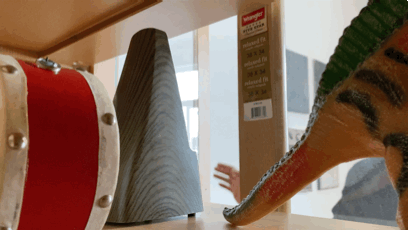
实践方式——在家中,把我们自己小孩的玩具一一收入有节拍器的柜子中,摆放整齐。
Practice – At home, put our own children’s toys in a metronome cabinet and put them neatly.
分类二:有情绪的/Emotional

实践方式——用麦克风现场发出声音,电脑将声音信号的振幅用来调制可引发军鼓振动的正弦波信号。最终让众多军鼓产生共振。
Practice – A microphone is used to produce sound live, and the computer uses the amplitude of the sound signal to modulate the sine wave signal that causes the snare drum to vibrate. The result is a resonance of many snare drums.
分类三:被玻璃隔开的/Separated by glass
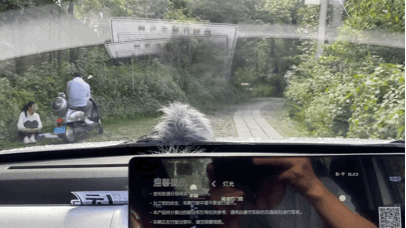
实践方式:开车出行,同时录制车内和车外的声音,合成在一起。
How it works: Traveling by car, recording the sounds inside and outside the car at the same time, and composing them together.
分类四:河两岸的/on both sides of the river
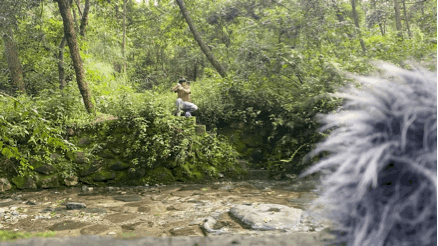
实践方式:在河的两岸分别录制发出的和接收的声音,后期将接收到的声音在时间上前移,先于发出的声音播放。
Practice: Recording the emitted and received sounds on both sides of the river, and later moving the received sounds forward in time to play them before the emitted sounds.
分类五:被水过滤的/Filtered by water
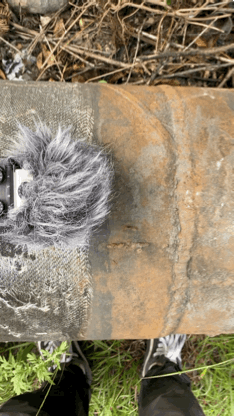
实践方式:在数百米的水管(里面有流水)一端敲击石头,录制敲击的声音,同时在下游录制通过水管到达的声音,合成在一起。
你会看到重要的不是分类,而是实践和命名,以及在名实之间的逻辑的和非逻辑的关系。我们不用它是否是合理的来回答这种分类命名,而是用你是否实践了来代替。当我们日常当中充满“一分钟的纸”这样的表达时,它会多么具有诗意。
How it works: Tapping a stone at one end of a water pipe for hundreds of meters (with running water in it) and recording the sound of the tapping while recording the sound arriving through the water pipe downstream, synthesized together.
You will see that it is not the classification that is important, but the practice and naming, and the logical and non-logical relationship between the real and the name. We don’t answer this categorical naming by whether it’s reasonable or not, but by whether you practice it or not. How poetic it can be when we are filled with expressions like “one-minute paper” in our daily lives.